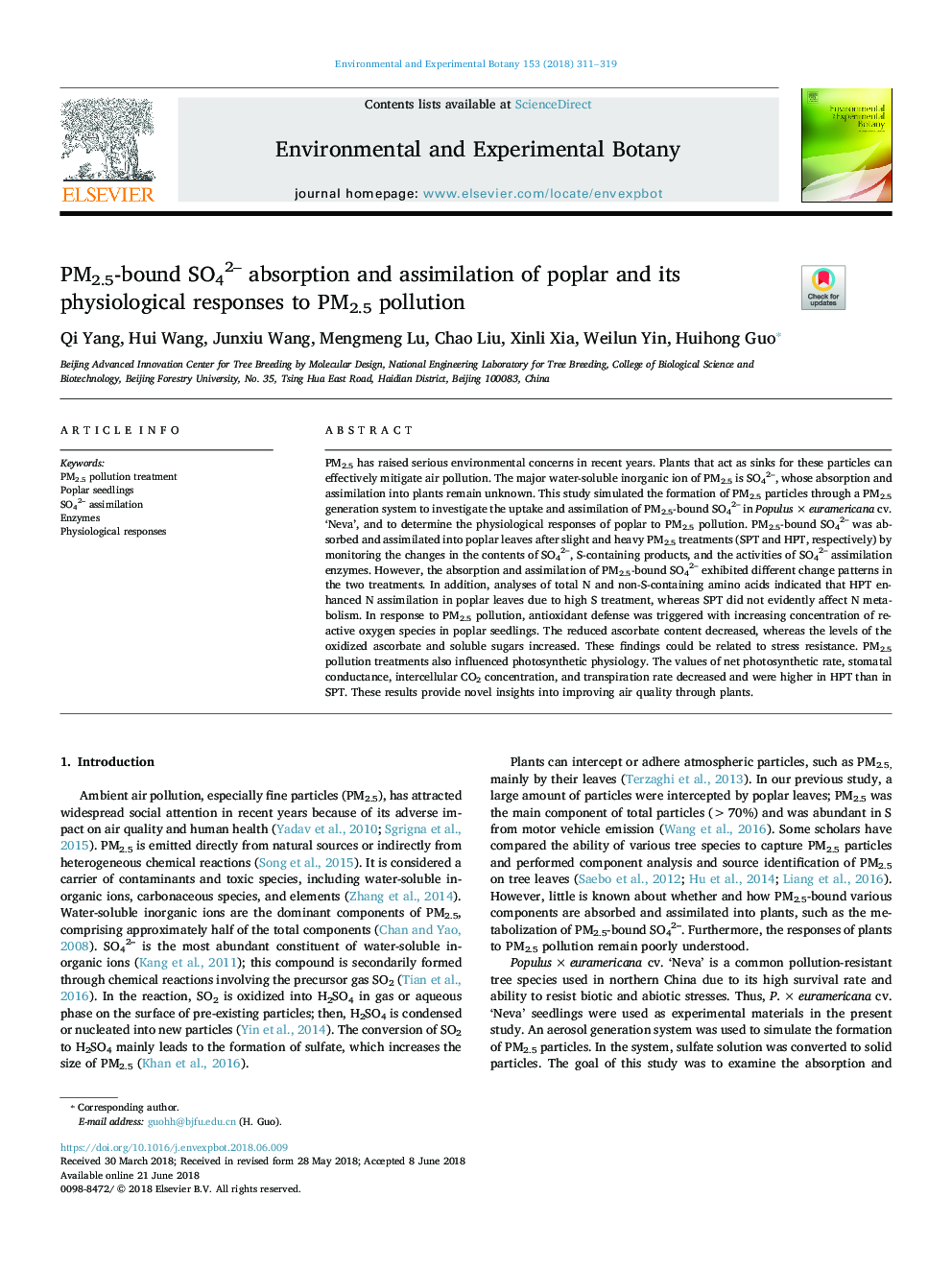| Article ID | Journal | Published Year | Pages | File Type |
|---|---|---|---|---|
| 8886930 | Environmental and Experimental Botany | 2018 | 9 Pages |
Abstract
PM2.5 has raised serious environmental concerns in recent years. Plants that act as sinks for these particles can effectively mitigate air pollution. The major water-soluble inorganic ion of PM2.5 is SO42-, whose absorption and assimilation into plants remain unknown. This study simulated the formation of PM2.5 particles through a PM2.5 generation system to investigate the uptake and assimilation of PM2.5-bound SO42- in Populusâ¯Ãâ¯euramericana cv. 'Neva', and to determine the physiological responses of poplar to PM2.5 pollution. PM2.5-bound SO42- was absorbed and assimilated into poplar leaves after slight and heavy PM2.5 treatments (SPT and HPT, respectively) by monitoring the changes in the contents of SO42-, S-containing products, and the activities of SO42- assimilation enzymes. However, the absorption and assimilation of PM2.5-bound SO42- exhibited different change patterns in the two treatments. In addition, analyses of total N and non-S-containing amino acids indicated that HPT enhanced N assimilation in poplar leaves due to high S treatment, whereas SPT did not evidently affect N metabolism. In response to PM2.5 pollution, antioxidant defense was triggered with increasing concentration of reactive oxygen species in poplar seedlings. The reduced ascorbate content decreased, whereas the levels of the oxidized ascorbate and soluble sugars increased. These findings could be related to stress resistance. PM2.5 pollution treatments also influenced photosynthetic physiology. The values of net photosynthetic rate, stomatal conductance, intercellular CO2 concentration, and transpiration rate decreased and were higher in HPT than in SPT. These results provide novel insights into improving air quality through plants.
Keywords
Related Topics
Life Sciences
Agricultural and Biological Sciences
Ecology, Evolution, Behavior and Systematics
Authors
Qi Yang, Hui Wang, Junxiu Wang, Mengmeng Lu, Chao Liu, Xinli Xia, Weilun Yin, Huihong Guo,
